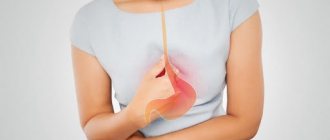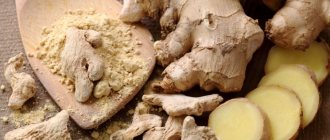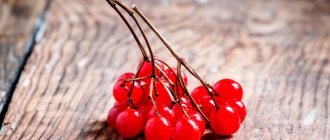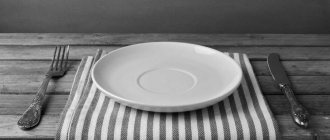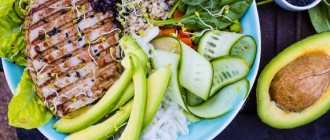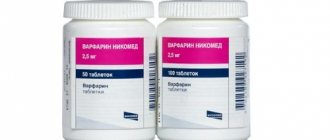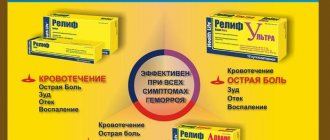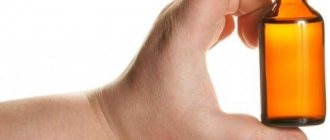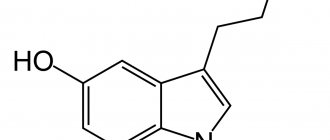11/25/2019 Article
- general characteristics
- Table "Do's and Don'ts"
- Menu for the week
- Diet modifications Diet “Table 1A”
- Diet "Table 1B"
The “1 table” diet , developed by the Soviet nutritionist M.I. Pevzner, is prescribed for the following diseases:
- peptic ulcer of the stomach and duodenum during the recovery period after a sharp exacerbation and with a mild exacerbation;
- mild exacerbation of chronic gastritis with preserved or increased secretion;
- acute gastritis during the recovery period.
The “1 table” diet is considered tough, but it is designed to support the digestive tract and help it recover.
Find a trusted dietitian in your city and make an appointment online
Consultation with a nutritionist
What is diet No. 1 according to Pevzner
Dietary table number 1 was created by the Soviet nutritionist M.I. Pevzner and has been practiced for several decades. Diet 1 is considered strict, but it is the one that supports the proper functioning of the gastrointestinal tract and helps to recover in the safest way during periods of various diseases.
shutterstock.com
Such a diet, with adequate nutrition, reduces chemical, mechanical and thermal effects on the gastrointestinal tract, reduces internal inflammation, accelerates the healing of ulcers and normalizes stomach functions. A person eats, maintaining the BJU ratio, but limits the impact of pathogens and irritants on internal organs. Food is consumed mashed, boiled in water or steamed; dishes are prepared without breading or crust.
shutterstock.com
Each patient, without exception, is prescribed a diet by a gastroenterologist. This is due to the fact that the treatment program is divided into several “tables”: 1, 1a, 1b. Only a doctor determines what type of nutrition a sick person needs.
Diet table 1: products
Acceptable foods and dishes can be divided into the following groups:
- Soups: slimy consistency, you can add semolina, oatmeal, pearl barley or rice, cream or butter;
- Cereals: liquid slimy porridges made from semolina, pureed buckwheat, rice or oatmeal. You can also add cream or milk;
- Meat and fish: lean veal, beef, chicken and turkey, without skin, fat, fascia and tendons. To prepare it, you need to boil it, pass it through a grater or meat grinder, and use it as a puree or soufflé;
shutterstock.com
- Eggs: soft-boiled or steamed omelet, no more than three eggs per day;
- Fruits and berries: sweet fruits, boiled or baked; compotes, rosehip decoction;
- Dairy products: milk, cream, steam soufflé from freshly prepared pureed cottage cheese.
- Drinks: weak tea with milk or cream, weak cocoa or coffee with milk;
- Additionally: jelly, sweet fruit jelly, milk jelly, honey.
- Excluded: vegetables, herbs, sweets and flour.
Dishes are prepared in unsalted butter or refined vegetable oil. Other types of oils are excluded.
shutterstock.com
Indications for use.
Therapeutic diet No. 1 according to Pevzner is recommended for people with peptic ulcers of the stomach and duodenum during the period of recovery after a sharp exacerbation, as well as during exacerbation of these diseases. The same diet is prescribed for exacerbation of chronic gastritis with preserved or increased secretion, as well as during the period of exacerbation after acute gastritis.
Nutritional features.
The main feature of treatment table No. 1 is the moderation of chemical, mechanical and thermal effects on the gastrointestinal tract. The diet limits foods that strongly stimulate the secretion of the stomach, irritate its mucous membrane, and are difficult or take a long time to digest. The main part of food is prepared in pureed, liquid or mushy form; it is boiled in water or steamed. Dishes can be baked, but without a crust. Fish and lean meats can be served in pieces. Too cold and very hot dishes are excluded from the diet. Salt is limited. Also limit foods containing a lot of fiber. It is recommended to take food in small portions, quite often - five to six times a day. By following such a diet, inflammation decreases, ulcers heal faster and easier, and the secretory and motor functions of the stomach return to normal.
Chemical composition and energy value.
Proteins – 90-100 g (60% animal), fats – 100 g (30% vegetable), carbohydrates – 400-420 g, table salt – 10-12 g, free liquid – 1.5 l.
The calorie content of the diet is 2800-3000 kcal. Product table
| Authorized Products | Prohibited Products |
| Bread products | |
| White wheat bread made from premium and 1st grade flour, yesterday's baking or dried, dry biscuit, white crackers, uncooked cookies. Once or twice a week, baked savory buns, baked pies with apples, jam, and cheesecake with cottage cheese are allowed. | Rye bread and any fresh bread, pastry and puff pastry products. |
| Milk and dairy products | |
| Whole, dry or condensed milk, cream, fresh non-sour cottage cheese, non-sour kefir, yogurt. Mild, unsalted varieties of cheese in grated form, and occasionally. You can prepare cottage cheese dishes: baked cheesecakes, soufflé, lazy dumplings, puddings. | Spicy, salty, hard cheeses, dairy products with high acidity. Sour cream is allowed to be consumed in limited quantities. |
| Soups | |
| Soups made from vegetable broth, from pureed and well-cooked cereals, puree soup from boiled vegetables (except cabbage), milk soup with small noodles. You can season first courses with butter, egg-milk mixture, and cream. | Soups from strong meat and fish broths, mushroom and strong vegetable broths, cabbage soup, borscht, okroshka. |
| Meat and meat dishes | |
| Lean meats, without tendons, fascia, or poultry skin. Steamed dishes made from beef, young lean lamb and trimmed pork, chicken, turkey, lean veal, chicken, and rabbit will be beneficial. Cutlets, meatballs, zrazy are steamed. Beef Stroganoff is made from boiled meat. Boiled tongue and liver are also allowed. | Fatty and stringy varieties of meat and poultry, duck, goose, canned meat, any smoked meats. |
| Fish and fish dishes | |
| Low-fat varieties of fish, without skin, cooked in pieces or in the form of cutlets. Fish should be boiled in water or steamed. | Fatty, salty fish, canned fish. |
| Cereals and pasta | |
| Semolina, buckwheat, oatmeal, rice. Porridges made from these cereals are cooked in milk or water. Vermicelli or pasta are allowed finely chopped, boiled. | Pearl barley, barley, corn, millet, legumes. |
| Vegetables | |
| Potatoes, carrots, beets, cauliflower. Green peas are allowed in limited quantities. Vegetables should be steamed or boiled in water. Vegetable dishes should be pureed, for example, mashed potatoes, soufflés, steam puddings. You can eat early pumpkin and zucchini ungrated. Finely chopped dill can be added to soups. Ripe non-acidic tomatoes can also be present in the diet, but not more than 100 g. | White cabbage, turnips, radishes, sorrel, spinach, onions, cucumbers. All salted, pickled and pickled vegetables. Mushrooms, canned vegetable snacks. |
| Eggs and egg dishes | |
| Soft-boiled eggs, steamed omelettes, but limited - no more than two per day. | Hard-boiled and fried eggs. |
| Fats | |
| Unsalted butter, refined vegetable oils added to dishes. | |
| Snacks | |
| Salads from boiled vegetables, meat, fish, boiled tongue, liver pate. Doctor's, milk and diet sausages are also allowed in small quantities; jellied fish in vegetable broth; sturgeon caviar, occasionally soaked lean herring. | Any spicy and salty snacks, canned food, smoked meats. |
| Berries and fruits | |
| Sweet varieties of ripe fruits and berries, berries from compotes. Berries and fruits in pureed, boiled and baked form, jelly, mousse, jelly. | Sour, insufficiently ripe fruits and berries, unprocessed dried fruits. |
| Sweets | |
| Sugar, honey, marshmallows, marshmallows, sour jam. | Chocolate and ice cream. |
| Beverages | |
| Weak tea, tea with milk or cream, weak cocoa with milk or cream, weak juices from fruits and berries, rose hip decoction. | All carbonated drinks, kvass, black coffee. |
Two types of treatment table No. 1.
There are two types of treatment table No. 1, which are designated No. 1a and No. 1b, respectively. Table No. 1a is recommended in the very first days of exacerbation of the above diseases, that is, in the first three to eight days of treatment. When following this diet, even from the permitted foods listed above, it is advisable to exclude vegetables, snacks, dairy products, cheese and sour cream, as they can greatly irritate the digestive organs. After that. Once the acute stage of the disease has passed, table No. 1b is recommended, in which the prohibitions of diet No. 1a are lifted.
Recipes
Diet pate
Ingredients: 100 g beef, two potatoes, medium carrots.
Boil the products, pass through a meat grinder: pour ½ cup of milk into the prepared minced meat, stirring, and simmer over low heat. Remove after 3-5 minutes, add a little salt.
Egg porridge
Ingredients: two eggs, 60 ml of milk, a little salt, two teaspoons of butter.
Dissolve eggs with milk, beat, add a little salt, add butter. Pour the resulting mass into a small bowl and place it in a pan of water. Cook, stirring constantly, until the consistency of porridge.
Pour the egg mixture into a saucepan with a small amount of warm water, cook like regular porridge until thickened. Strain the rest of the water.
Carrot soufflé with cottage cheese and honey
Ingredients: 500 g carrots, 250 g cottage cheese, 150 g milk, teaspoon sugar, egg, 50 g semolina, cube of butter.
Cut the carrots into pieces, pour in milk, boil until tender. Grate or beat in a blender, add grated cottage cheese, sugar, yolk and semolina. Mix the mixture well, and only then add the whipped egg white. Place in a bowl greased with oil and steam. If desired, serve with honey.
Curd soufflé
Ingredients: 250 g of cottage cheese (up to 9% fat), three eggs, a little sugar, 250 ml of milk, semolina flour.
Wipe the cottage cheese, add the yolk, sugar, milk, flour. Beat and add the whites, mix the mixture well. Place in a mold and steam. Serve with condensed milk.
Baked cutlets
Ingredients: 2 tablespoons of cottage cheese (fat content up to 9%), egg, 150 g of beef, butter.
Meat without tendons and fascia: boil and cool. Pass the beef and cottage cheese through a meat grinder twice. Beat the egg, leave a small part to grease the cutlets, pour the rest into the minced meat. Add oil, mix well until smooth. Form cutlets, place on a baking sheet, brush with egg. Bake in the oven until done.
Diet menu No. 1
Breakfast:
- meat pate with whole grain baguette, baked apple, tea;
- sandwich with cheese, liquid semolina porridge, tea;
- steam omelette, bread, tea with milk;
- oatmeal with milk and pears, green tea;
- soft-boiled egg, rice milk porridge, tea with milk;
- fresh non-acidic cottage cheese, rosehip decoction;
- steam omelette, crumbly buckwheat porridge, tea with milk;
- steam omelette, noodles with grated cheese, weak tea, berry jelly.
shutterstock.com
Lunch:
- baked fruits with honey or powdered sugar;
- marshmallows with tea;
- berry jelly, compote;
- curd pudding;
- baked apple with sugar.
- fresh non-acidic cottage cheese, rosehip decoction;
- pudding, soufflé;
- compote with dry cookies or biscuits.
Lunches:
- vegetable soup, boiled buckwheat with chicken fillet, carrot and spinach salad;
- puree soup of broccoli, chicken and potatoes, banana with cottage cheese;
- soup without meat, noodles with steamed meatballs, bread;
- rice soup with pureed minced meat, fruit jelly;
- pureed oatmeal soup, steamed fish soufflé, fruit jelly;
Dinners:
- buckwheat porridge with milk;
- semolina porridge with milk, egg omelet, sweet tea with milk;
- meat soufflé, cottage cheese casserole, jelly;
- acceptable cereals with steam cutlets, milk;
- mashed potatoes with chicken, bread;
- steamed rice and cutlets.
Features of diet No. 3 for constipation
The weekly dietary menu is designed taking into account the balance of proteins and carbohydrates in the diet. At the same time, there is an increase in the amount of fat due to the inclusion of vegetable oils. The diet involves consuming 100–120 g of fat, 85–100 g of protein, 450–500 g of carbohydrates.
Table No. 3 does not provide for the obligatory chopping or grinding of food. It is allowed to consume boiled and baked dishes, as well as carbonated mineral water in moderate quantities. You can cook porridge with milk diluted with water in a 1:1 ratio.
Drinks and foods whose temperature is below 15 °C increase peristalsis and reduce the production of gastric juice. Therefore, for constipation, it is recommended to drink chilled drinks. Before breakfast, it is advisable to drink a glass of cold water, and at night - compote or kefir. In addition, to soften the stool, it is useful to take 1-2 tablespoons of unrefined vegetable oil on an empty stomach. The oil coats the intestines and improves the movement of feces.
You can follow the diet for a long time. With this diet, the frequency and consistency of stools are normalized. This diet is indicated for constipation caused by an unbalanced diet and a sedentary lifestyle.
Prohibited Products
Like other diets, “Table No. 3” involves excluding certain foods from the diet. These include:
- flour products from yeast and puff pastry;
- fatty fish and meat, strong meat broths;
- radish, horseradish, garlic and other spicy vegetables;
- spicy sauces, mustard, hot pepper;
- strong tea, coffee and other caffeinated drinks;
- canned foods, fried eggs;
- legumes, mushrooms (mushroom broths are allowed);
- bananas, dogwood, blueberries, nuts;
- drinks with tannins: jelly, cocoa, drinks made from quince, bird cherry and blueberry.
Whole milk, smoked meats, fried and pickled foods are not recommended. You also need to exclude alcoholic drinks, chocolate, pasta, and legumes. Prohibited foods include rice, semolina, sweets with cream, and margarine. There is no need to eat foods that are difficult to digest: mashed potatoes, canned food, hard-boiled eggs, slimy soups.
Get rid of intestinal problems
The natural British drug is not addictive and works immediately
Find Fitomucil with benefits
Table 1a
Therapeutic diet option table 1A is one of diet No. 1. Usually the diet is prescribed in the first week of treatment for an exacerbation of a peptic ulcer or for gastritis during an exacerbation. The menu is more abbreviated, but the treatment period is also shorter. Among the features: food should be warm, proper drinking balance, daily calorie content - 2000 kcal. You need to eat in small portions, five to six times a day.
shutterstock.com
Flour, raw fruits and vegetables, sour cream, cottage cheese, cheese, sauce, and spices are excluded. You can eat soft, porridge-like foods without additives, boil or steam food.
Channel about healthy lifestyle in telegram! Subscribe
What foods should be excluded from the diet?
With exacerbation of gastritis, a number of foods can provoke a deterioration in the general condition. To avoid negative consequences, the following are excluded from the menu during therapy:
- White bread and flour products.
- Kefir, yogurt and other fermented milk products.
- Cottage cheese.
- Root vegetables and other fresh vegetables.
- Boiled eggs.
- Kvass and carbonated drinks.
- Spicy, fatty snacks.
- Semi-finished products.
- Legumes.
- Whole pasta.
- Sour fruits.
- Sauerkraut.
- Mushrooms, etc.
A detailed list of prohibited and permitted products is selected by a gastroenterologist. The specialist also monitors the patient’s condition at all stages of therapy and, if necessary, makes adjustments to the treatment process. Self-medication for acute gastritis is prohibited!

